Discover 20 hidden attractions, cool sights, and unusual things to do in Suzhou (China). Don't miss out on these must-see attractions: Humble Administrator's Garden, Master of the Nets Garden, and Lingering Garden. Also, be sure to include Retreat & Reflection Garden in your itinerary.
Below, you can find the list of the most amazing places you should visit in Suzhou (Jiangsu).
Table of Contents
Humble Administrator's Garden
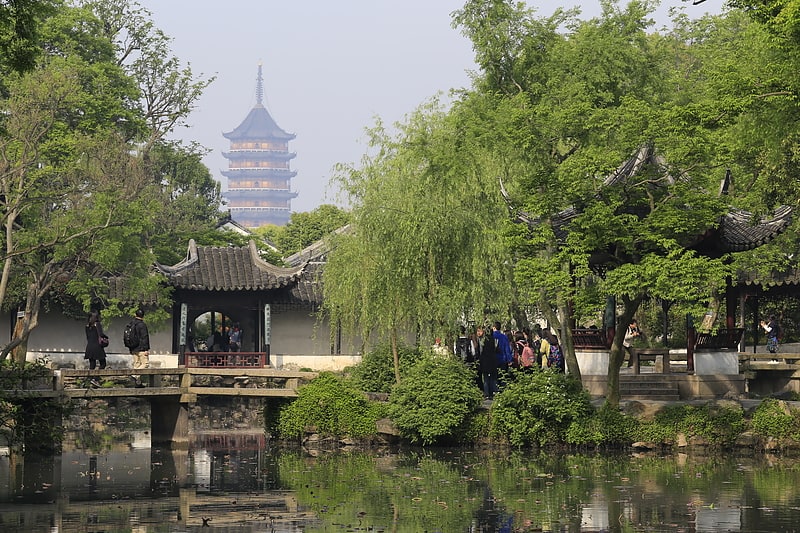
Also known as: 拙政园
Ming-era garden with 3 individual areas. The Humble Administrator's Garden is a Chinese garden in Suzhou, a UNESCO World Heritage Site and one of the most famous of the gardens of Suzhou. The garden is located at 178 Northeast Street, Gusu District. At 78 mu, it is the largest garden in Suzhou and is considered by some to be the finest garden in all of southern China.[1]
Address: 178 Dongbei St, 215001 Suzhou Shi
Master of the Nets Garden
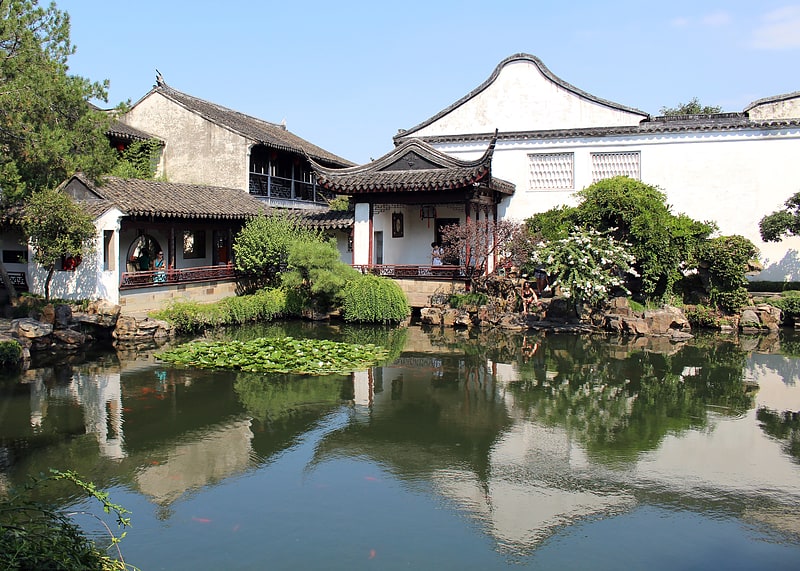
Also known as: 网师园
Historic garden with water and pavilions. The Master of the Nets Garden in Suzhou is among the finest gardens in China. It is recognized with other classical Suzhou gardens as a UNESCO World Heritage Site. The garden demonstrates Chinese garden designers' adept skills for synthesizing art, nature, and architecture to create unique metaphysical masterpieces. The Master of the Nets is particularly regarded among garden connoisseurs for its mastering the techniques of relative dimension, contrast, foil, sequence and depth, and borrowed scenery.[2]
Address: 11 Kuojiatou Alley, Suzhou
Lingering Garden
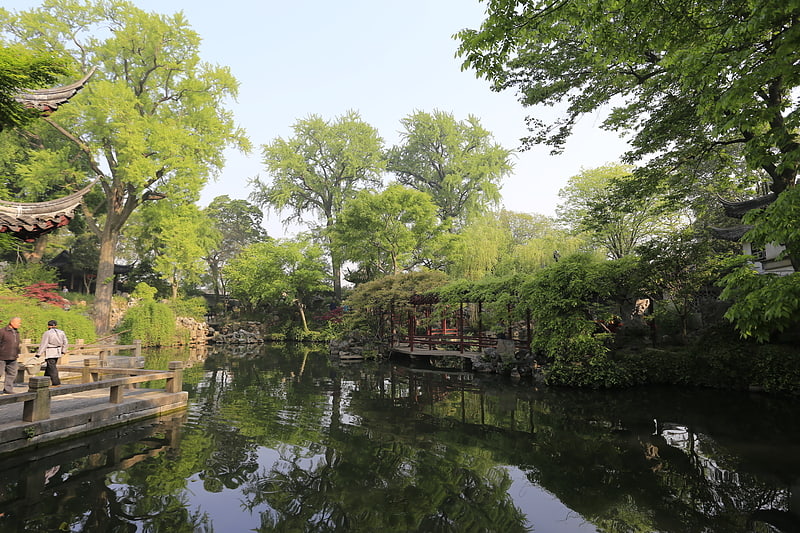
Also known as: 留园
UNESCO-recognized classical garden. Lingering Garden is a renowned classical Chinese garden, dating back to 1593. It is located at 338 Liuyuan Rd. Suzhou, Jiangsu province, China. Since 1997 it has been recognized with seven other Classical Gardens of Suzhou as a UNESCO World Heritage Site. The garden also contains two UNESCO Intangible World Heritage Arts; Pingtan and Guqin music.[3]
Address: 338 Liuyuan Rd, Suzhou
Retreat & Reflection Garden

Also known as: 退思园
The Retreat & Reflection Garden is a notable classical garden in China. It is located in Tongli, Wujiang, Jiangsu, China. In 2001, it was recognized with other classical Suzhou gardens as a UNESCO World Heritage Site.[4]
Lion Grove Garden
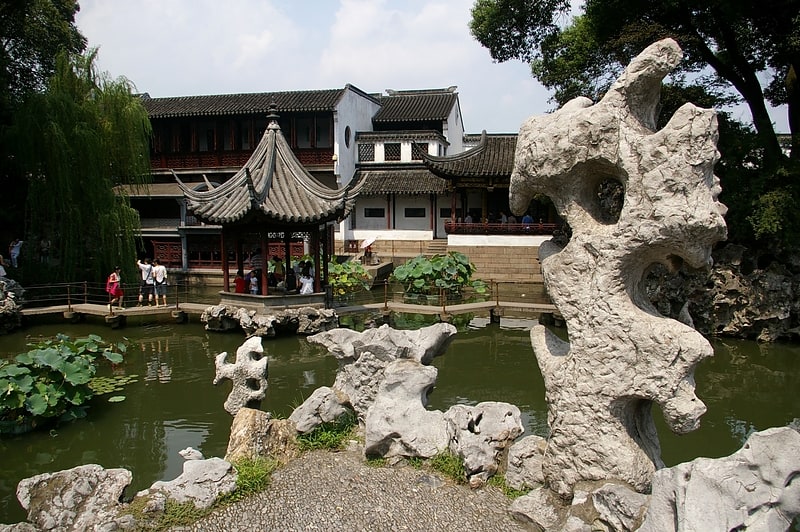
Also known as: 狮子林
Chinese garden with ornate rockery. The Lion Grove Garden is a garden located at 23 Yuanlin Road in Gusu District, Suzhou, Jiangsu, China. The garden is famous for the large and labyrinthine grotto of taihu rocks at its center. The name of the garden is derived from the shape of these rocks, which are said to resemble lions. The garden is recognized with other classical gardens in Suzhou as a UNESCO World Heritage Site.[5]
Address: 23 Yuanlin Rd., 215002 苏州
Tiger Hill
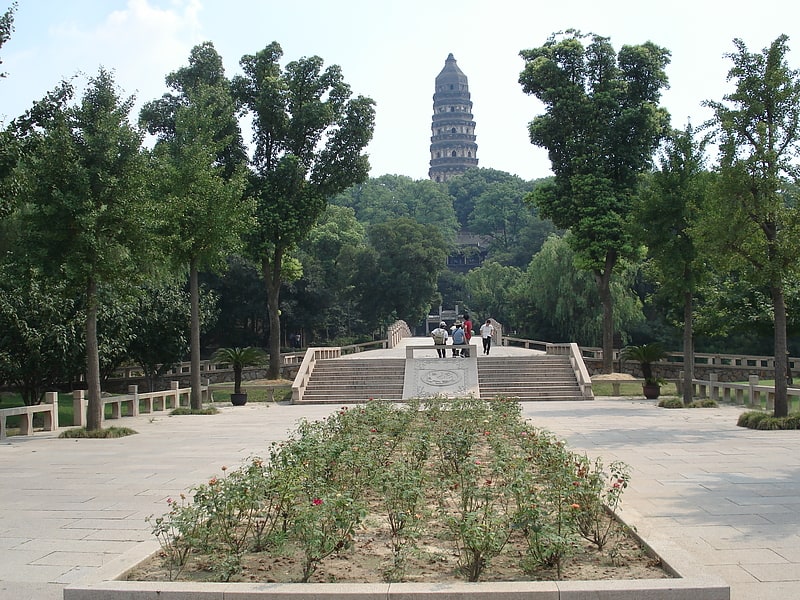
Also known as: 虎丘
Hill. Tiger Hill is a hill in Suzhou, China. It is a tourist destination that is known for its natural environment and historic sites. The hill's name is said to come from the fact it looks like a crouching tiger. Another legend states that a white tiger appeared on the hill to guard it following the burial of King Helü. The hill is also sometimes referred to in parallel with "Lion Mountain", another hill near Suzhou which resembles a sitting lion.[6]
Couple's Retreat Garden
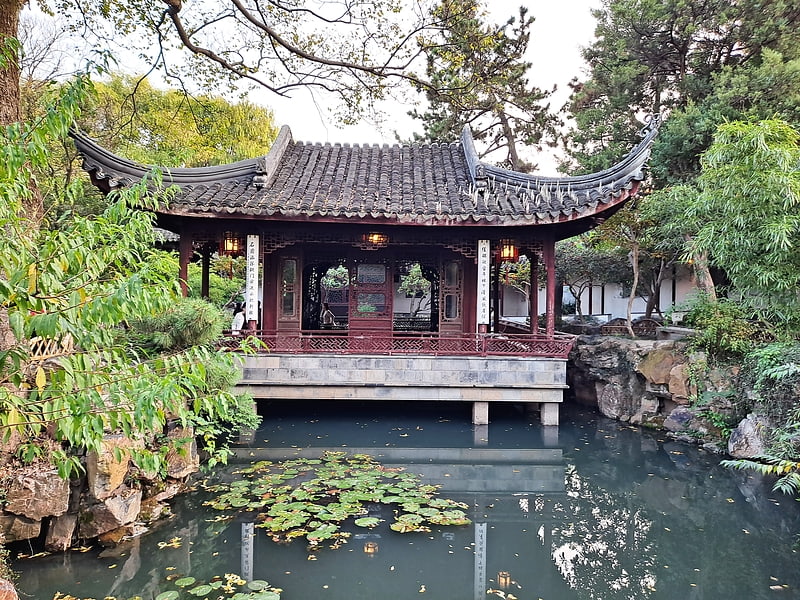
Also known as: 耦园
Tourist attraction in Suzhou, China. Couple's Retreat Garden located in Suzhou city, Jiangsu province, China is a famous classical Chinese garden. It is recognized with other classical Suzhou gardens as a UNESCO World Heritage Site.[7]
Hanshan Temple
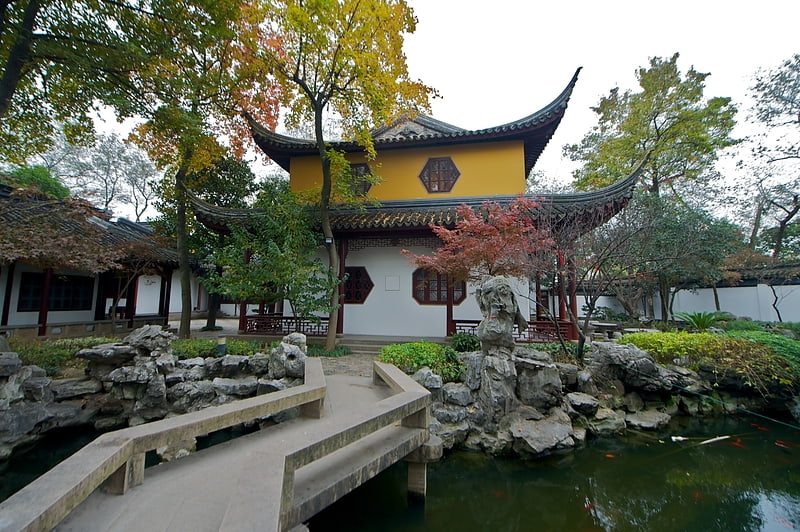
Also known as: 寒山寺
Temple. Hanshan Temple, is a Buddhist temple and monastery in Gusu District of Suzhou, Jiangsu, China. It is located at the town of Fengqiao, about 5 kilometers west of Suzhou's old city.
Traditionally, Hanshan Temple is believed to have been founded during the Tianjian era (502–519) of the reign of Emperor Wu of Liang, in the Southern and Northern Dynasties period. The current name of the monastery derives from Hanshan, the legendary monk and poet. Hanshan and his disciple Shide are said to have come to the monastery during the reign of Emperor Taizong of Tang (627–649), where Hanshan became the abbot.[8]
Canglang Pavilion
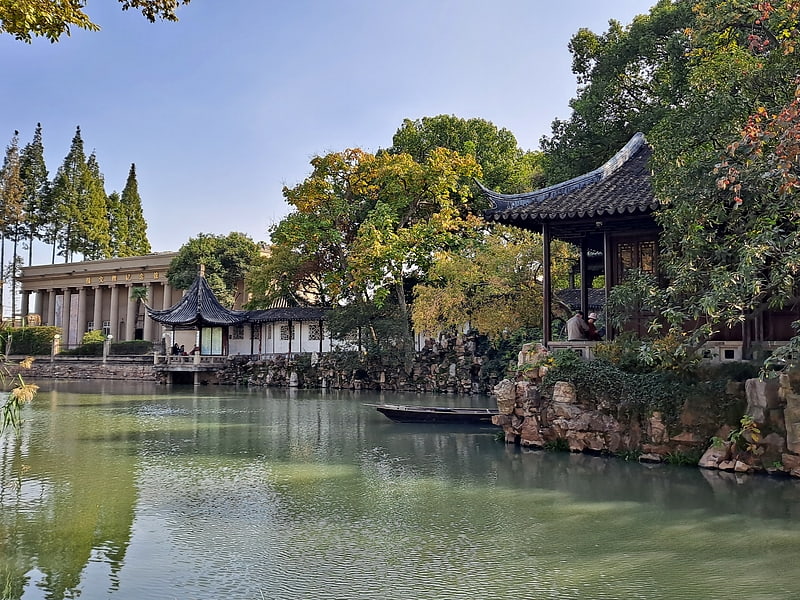
Also known as: 沧浪亭
Tourist attraction in Suzhou, China. The Canglang Pavilion, variously translated as the Great Wave Pavilion, Surging Wave Pavilion, or Blue Wave Pavilion, is one of the Classical Gardens of Suzhou that are jointly recognized as a UNESCO World Heritage Site. It is located at 3 Canglangting Street in Suzhou, Jiangsu China.[9]
Suzhou Museum
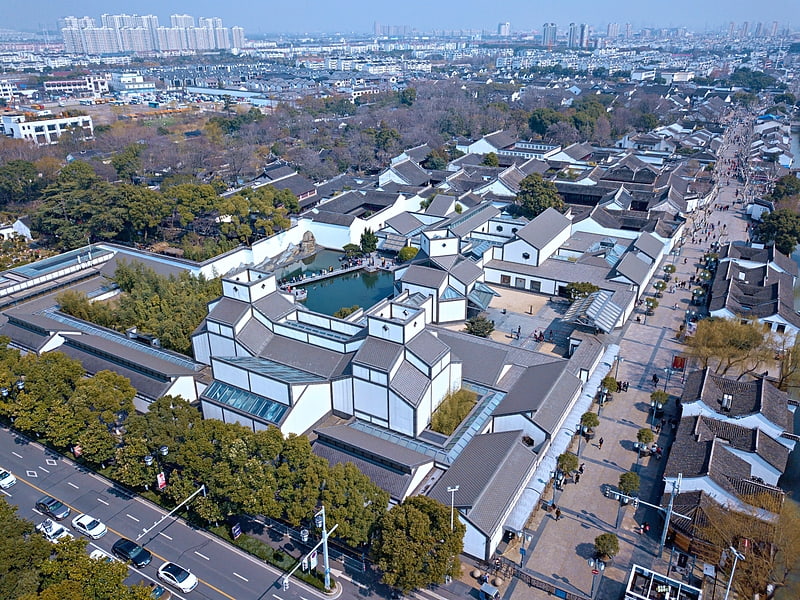
Also known as: 苏州博物馆
Chinese artifacts in a Pei-designed site. The Suzhou Museum is a museum of ancient Chinese art, paintings, calligraphy and handmade crafts in Suzhou, Jiangsu, China. It is one of the most visited museums in the world, with 2,340,000 visitors in 2018. The Folk Branch of the museum is at the Bei family ancestral temple near Lion Grove Garden.[10]
Address: 204 Dongbei St, 215000 Suzhou Shi
North Temple Pagoda
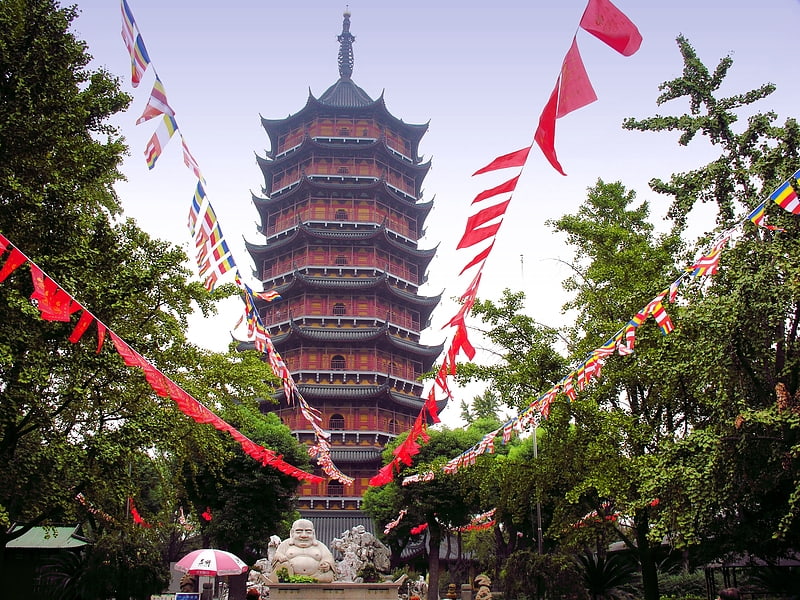
Also known as: 报恩寺塔
The Beisi Pagoda or North Temple Pagoda is a Chinese pagoda located at Bao'en Temple in Suzhou, Jiangsu Province, China. The base of the pagoda has an octagonal frame, and the tower rises nine stories in a total height of 76 m. The pagoda was once eleven stories tall, but was damaged and reduced to nine stories. Its double eaves and flying corners are similar to that of the Liuhe Pagoda found in Hangzhou. Its base and outside walls are made of brick, the balustrades made of stone, and the eaves and banisters encircling the structure are made of wood.[11]
Address: Renmin Lu, Suzhou
Tiger Hill Pagoda
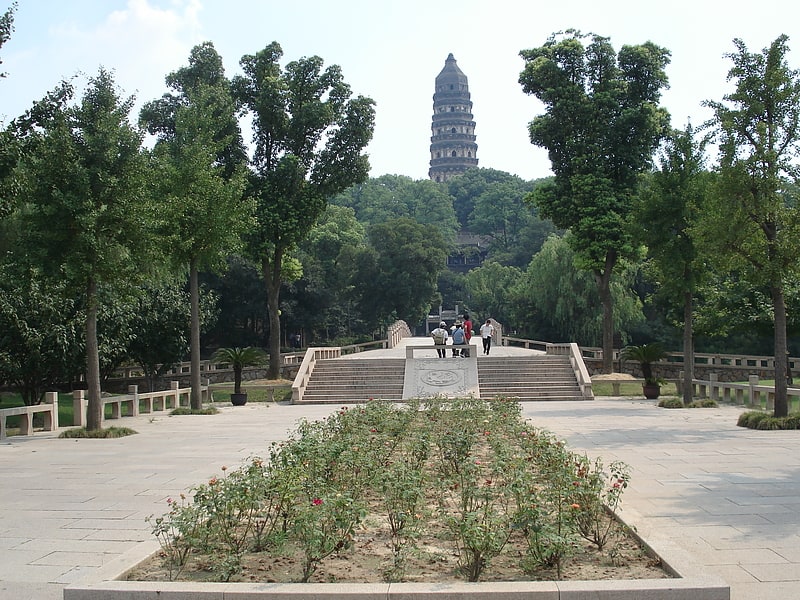
Also known as: 云岩寺塔
Leaning pagoda built in the 10th century. The Tiger Hill Pagoda, more officially the Yunyan Pagoda, also sometimes translated as Huqiu Tower, is a Chinese pagoda situated on Tiger Hill in Suzhou city, Jiangsu Province of Eastern China. It is nicknamed the 'Leaning Tower of China'.[12]
Tianping Mountain
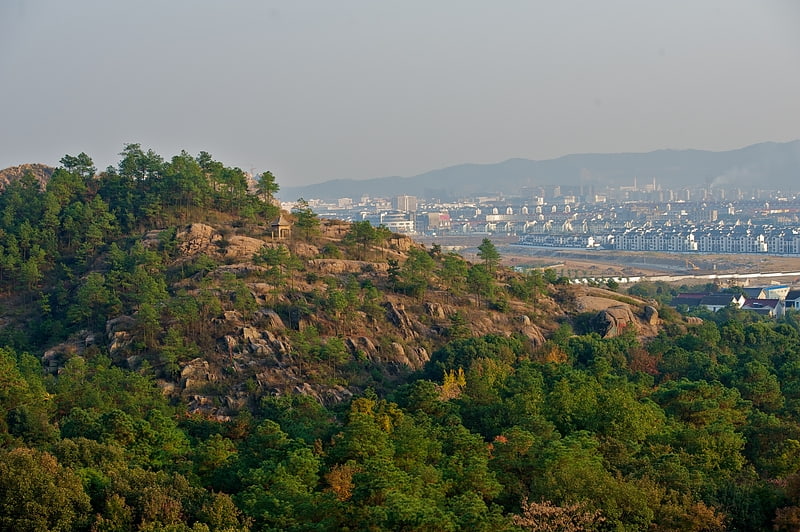
Mountain in China. Tianping Mountain, also called Baiyun Mountain or Ci Mountain, is a mountain located in southwestern Suzhou, Jiangsu, China. Its elevation is about 201 meters. The mountain gained fame due to Fan Zhongyan, whose ancestors were buried there. And now, Fan Zhongyan Memorial has been established near the mountain. Tianping Mountain is also famous for its stone, spring and maple.[13]
Xuanmiao Temple
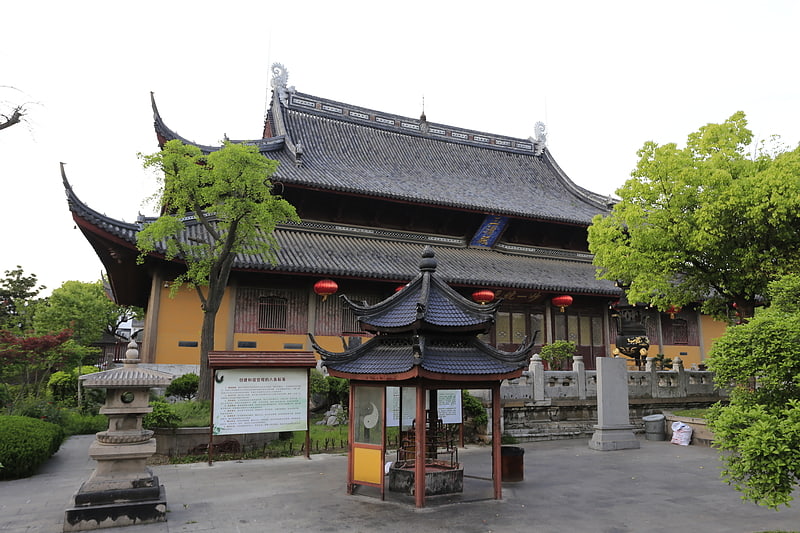
Also known as: 玄妙观
Major religious site founded in AD 276. Xuanmiao Temple is a prominent Taoist temple with a long history, located at the center of old Suzhou City.
The street along the east-west direction in front of the temple is called Guanqian Street, a famed business pedestrian street in Suzhou. A lane called Gong Xiang (宫巷) along north-south direction leads directly to the gate.[14]
Address: East end of the pedestrian shopping area on Guanqian Jie, Suzhou
Pan Gate
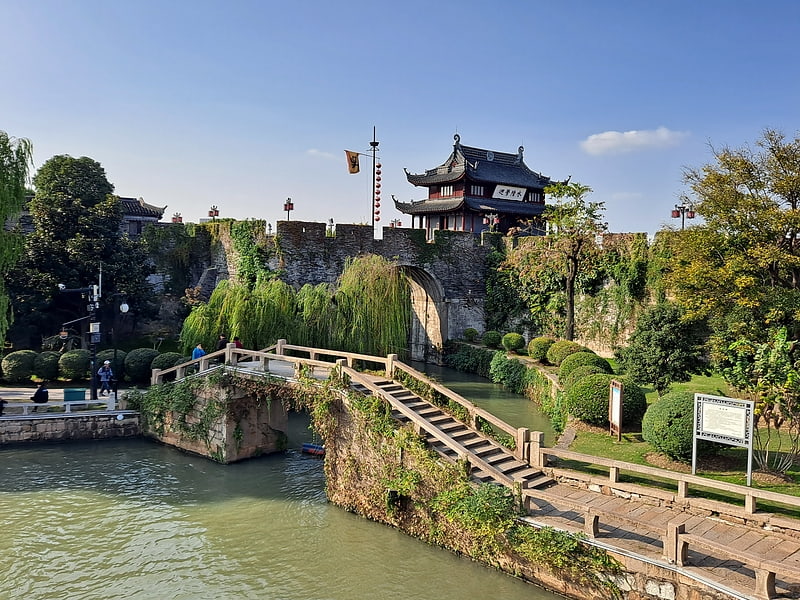
Also known as: 盘门
Tourist attraction in Suzhou. Pan Gate, Pan Men, or Panmen is a historical landmark in Suzhou, Jiangsu, China. It is located on the south-west corner of the Main Canal or encircling canal of Suzhou. Originally built during the Spring and Autumn period in the state of Wu, historians estimate it to be around 2,500 years old. It is now part of the Pan Gate Scenic Area. It is known for the "three landmarks of Pan Gate". They are the Ruiguang Pagoda, the earliest pagoda in Suzhou built in 247, the Wu Gate Bridge, the entrance to the gate at that time over the water passage and the highest bridge in Suzhou at the time, and Pan Gate. The Ruigang Pagoda is constructed of brick with wooden platforms and has simple Buddhist carvings at its base.
Pan Gate is part of the ancient city wall built in 514 BCE that surrounded and protected Suzhou. Pan Gate was the only entrance to the wall that surrounded ancient Suzhou. It is also known in China for its architecture. It is so famous for its complex of both land and water city gates that many times, people directly refer to it as the "Land and Water Gate". In order to attract more tourists, in recent years, the city of Suzhou has renovated the old wall and built many other attractions around the original gate in the Pan Gate Scenic Area.
The present structure was built in the 11th year of the reign of Zhizheng (1333-1370 AD) at the end of the Yuan dynasty (1271-1368).[15]
Address: DongDa Jie, Suzhou
Garden of Pleasance

Also known as: 怡园
Tourist attraction in Suzhou, China. The Garden of Pleasance, or Yi Yuan is a classical Chinese garden located in Suzhou, Jiangsu province, China.[16]
Suzhou Confucian Temple

Also known as: 苏州文庙
Museum in Suzhou, China. The Confucian Temple of Suzhou and also known as the Suzhou Stone Inscription Museum and Suzhou Prefecture School, is a Confucian temple located in the ancient city of Suzhou, Jiangsu Province, China, on the south bank of the Yangtze River. It was built by Fan Zhongyan, a famous state officer in Song Dynasty. It was the first temple school in China and is notable for containing the four greatest steles of Song Dynasty, of on which is the Map of Pingjiang. In 1961, the stone inscriptions in Suzhou Confucian Temple were listed among the first batch of National Key Cultural Relic Protection Units by The State Council of the People’s Republic of China. In 2001, together with the Confucian Temple, it was called Suzhou Confucian Temple and Stone inscription. Presently, it is known as new name as Suzhou Stone Inscription Museum.[17]
Puji Bridge
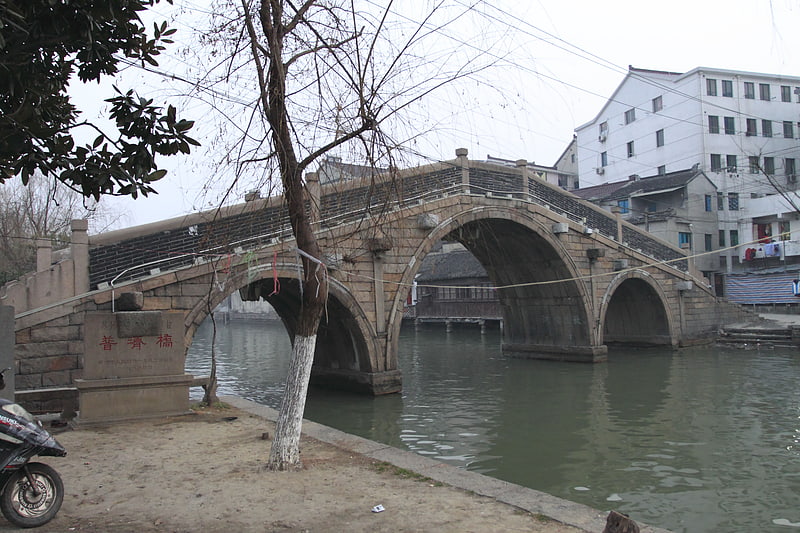
Bridge. The Puji Bridge is a historic stone arch bridge over the Shantang River in the Gusu District of Suzhou, Jiangsu.[18]
Garden of Cultivation
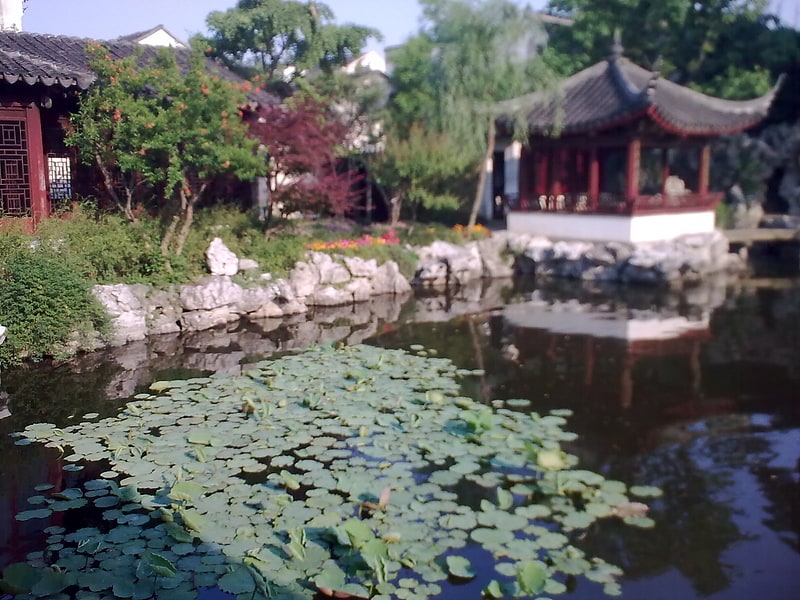
Also known as: 艺圃
Attraction in Suzhou, China. The Garden of Cultivation is one of the best preserved examples of a Ming Dynasty classical garden in Suzhou. It is part of the Classical Gardens of Suzhou on UNESCO's World Heritage Site list. "Due to its special history, this Garden was virtually unknown before it was listed as a UN World Cultural Heritage site."[19]
Address: 5 Wenya Alley, Suzhou
Mountain Villa with Embracing Beauty
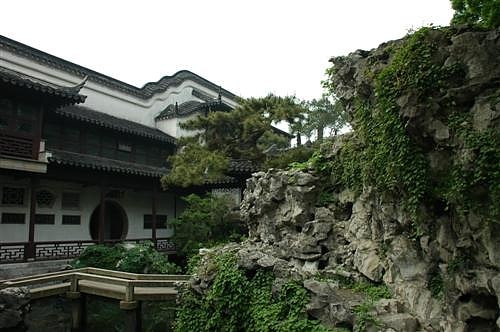
Also known as: 环秀山庄
Tourist attraction in Suzhou, China. The Mountain Villa with Embracing Beauty is a Chinese garden located on 272 Jingde Rd. inside the Embroidery Museum in Suzhou, Jiangsu, China. In 1997, it was recognized with other classical Suzhou gardens as a UNESCO World Heritage Site.[20]